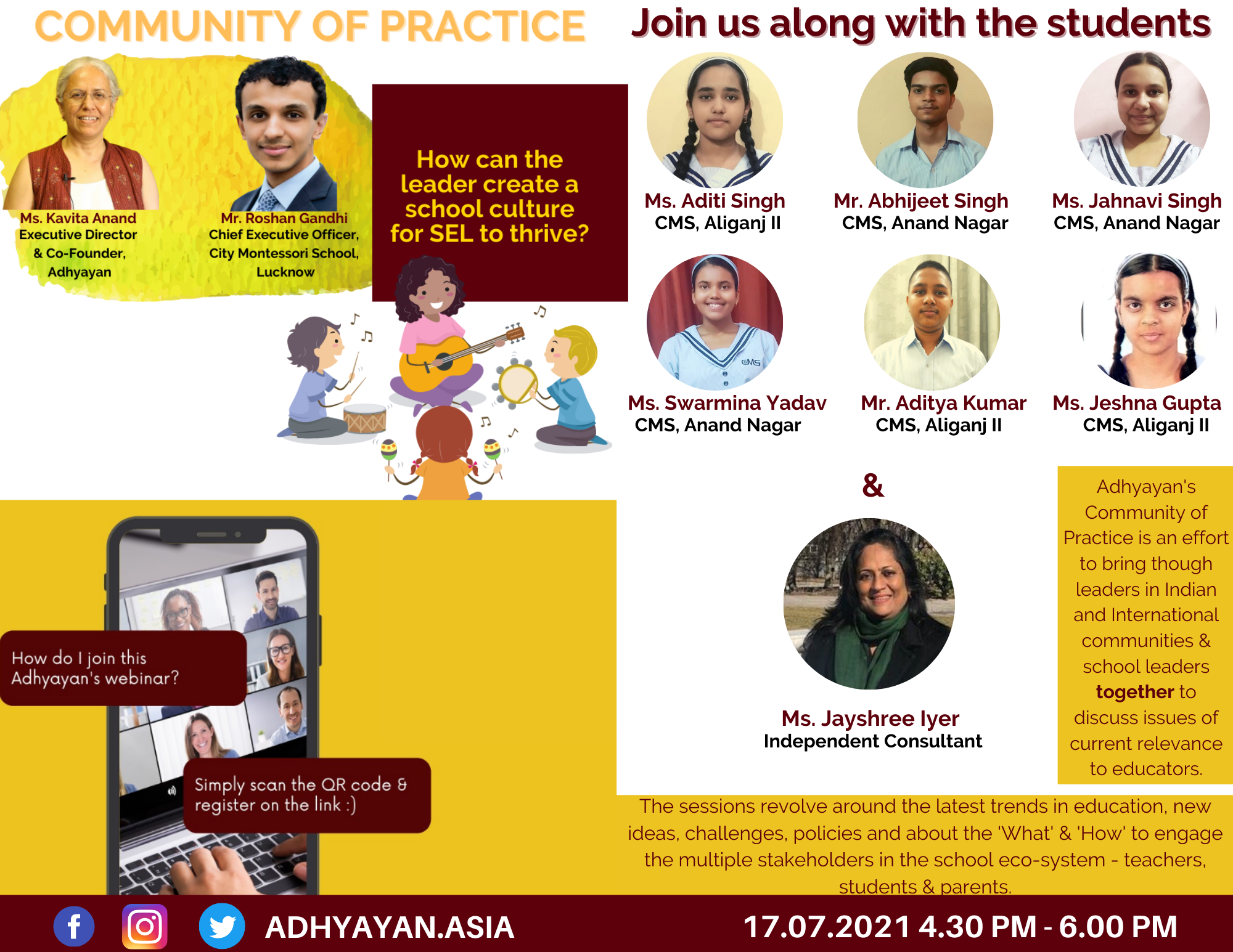
A school leadership and the self-motivated faculty with the value of global citizenship that has the child at the center produces individuals who become confident even before they leave the school. For social-emotional learning to become a reality in the classroom, it is the teachers who need to believe in it first; intervention, collaboration, and communication among themselves by devising classroom strategies, making it consciously part of each lesson plan. With these ideas projected by Mr. Roshan Gandhi, CEO of City Montessori School, Lucknow, in the fortnightly session anchored this time by the Executive Director and Founder- Adhyayan Quality Education Services, Ms. Kavita Anand herself, the ball was set rolling with a few pertinent questions from the audience too.
Kavita took a different route from here as some of the students from middle and senior classes from the same school were invited as panelists to express their take on SEL being done by their school. With her apt questioning, Kavita extracted the information and opinions of these students representing the other side of the screen during the last 16 months of online learning. What one could gather from this whole interaction was that peer learning and the introduction of group activities in the classroom are essential to foster SEL in the classroom. The students get bored if the educators are only involved in monologues and the completion of the curriculum. Many students may not be in a healthy and happy state of mind because of loneliness, tragedies in the family or for other reasons. Empathetic behavior by teachers helps in building an emotional connection with their students. The involvement of parents is an essential component to foster SEL for them. The children could very clearly spell out that hobby classes, literary, cultural, and other interesting activities made them feel happy and involved.
The session was introduced and summarized by Ms. Jayshree Iyer who sent out the messages to school leaders like reducing content to make space for SEL and constant capacity building of the teachers to engage the students by integrating SEL in every curricular and extra-curricular activity meaningfully.
A befitting conclusion to a series that leaves some food for thought for those who want to understand, what it would take to ensure that our children grow as happy and well-adjusted learners!
Click here to watch the full session